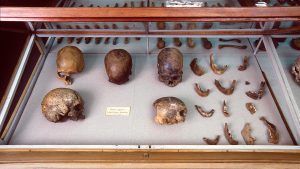George Dvorsky in Gizmodo:
 It’s a huge day for archaeologists and anyone interested in the history of America’s first settlers. Findings from three new genetics studies—all released today—are presenting a fascinating, yet complex, picture of the first people in North and South America, and how they spread and diversified across two continents.
It’s a huge day for archaeologists and anyone interested in the history of America’s first settlers. Findings from three new genetics studies—all released today—are presenting a fascinating, yet complex, picture of the first people in North and South America, and how they spread and diversified across two continents.
Our understanding of how the Americas were first settled used to be simple. Today, it’s not.
North America’s first migrants, we’ve been told, spilled into the continent at the tail end of the last Ice Age some 15,000 years ago, either by trekking along the West Coast and/or through an interior land route. Eventually, this population found itself south of a massive ice sheet covering North America from coast to coast. From here, scientists assumed that, as populations moved southward, some groups split off, never to meet again. Gradually, this pattern of southward migration and dispersal resulted in the peopling of the Americas.
But as the new research released today suggests, it’s considerably more complicated than that. Humans, as we’re all too aware, aren’t so predictable.
More here.
